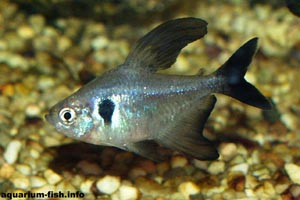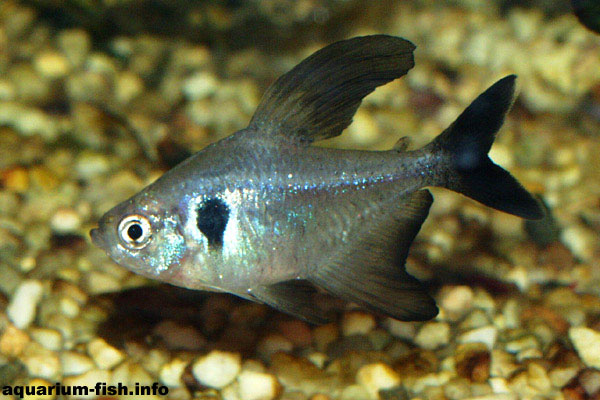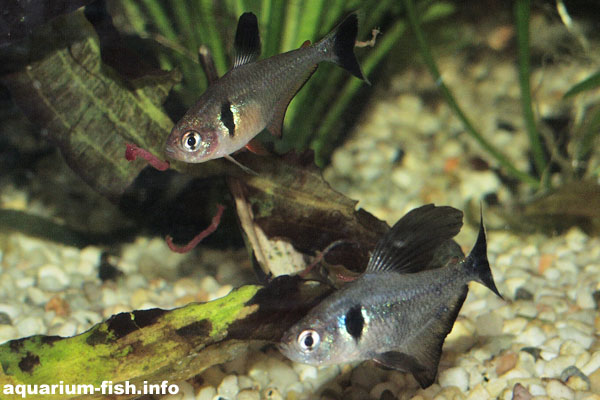

Species Profile | Images | Breeding Report | Similar Species

(Other members of the genus Megalomphodus)
ADULT SIZE: 5 cm
WATER CONDITIONS: Not critical
TEMPERATURE RANGE: 22-28 C
FOOD: Feed Megalomphodus megalopterus live and dried foods. Black Phantom tetras relish live foods. When possible offer frozen bloodworm, Daphnia, Artemia etc.
DISTRIBUTION: This species comes from Brazil
SEXUAL DIFFERENCES: Although patterning is broadly similar, males tend to have fuller fins, particularly a longer dorsal fin. Females have some redness in their fins and (to a lesser extent) body, whilst males are more silver. As with many species of fish, females also tend to be somewhat fuller bodied.
AQUARIUM CARE: This tough and easy to keep tetra is an aquarium favourite, and this is no surprise, as it thrives in almost any water conditions (but preferably softer), and over a broad temperature range. It is peaceful enough, and like other tetras, should be kept in a shoal of at least 6-8 individuals.
A good community species, but most at home in an Amazon-style set up; lushly planted with open areas for swimming, and partially shaded with floating plants.
BREEDING: In order to breed this species, the water shoft be softer and more acidic. This can be achieved by the addition of peat to a filter, or by topping up a tank over a period of days with reverse osmosis water. A typical egg scatterer that is best spawned in a separate breeding tank over marbles.
Have you bred Megalomphodus megalopterus? Why not fill in a breeding questionaire?, or examine existing Megalomphodus megalopterus breeding reports
Other members of the genus Megalomphodus
Other characin species
Other species from Brazil

An aquarium favourite, Megalomphodus megalopterus is most at home in a planted Amazon-style tank

Like most characins, Black Phantoms enjoy livefoods, such as frozen bloodworm. This picture highlights the differences between male (foreground) and female (background). Note the redder fins and body of the female, and the rounder belly. Also the significantly larger fins of the male
BREEDING: In order to breed this species, the water shoft be softer and more acidic. This can be achieved by the addition of peat to a filter, or by topping up a tank over a period of days with reverse osmosis water. A typical egg scatterer that is best spawned in a separate breeding tank over marbles.
Have you bred Megalomphodus megalopterus? Why not fill in a breeding questionaire?
Sorry no records.